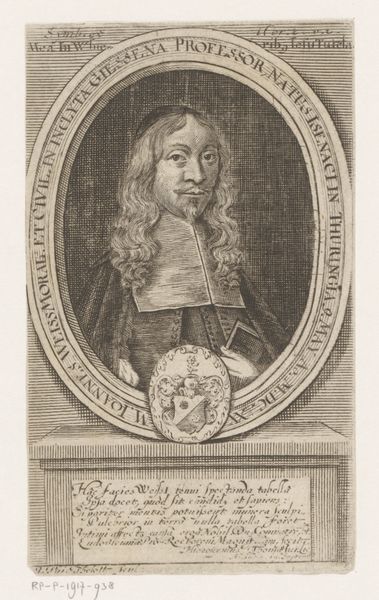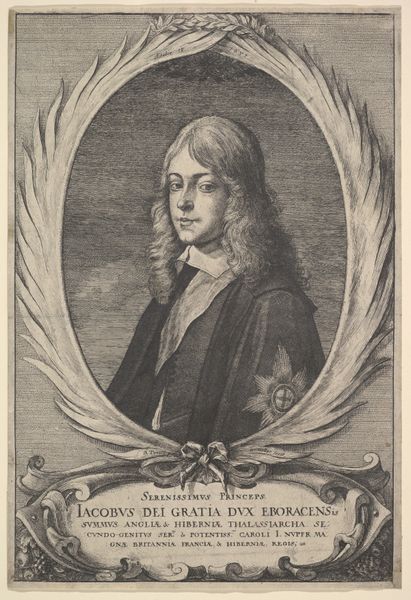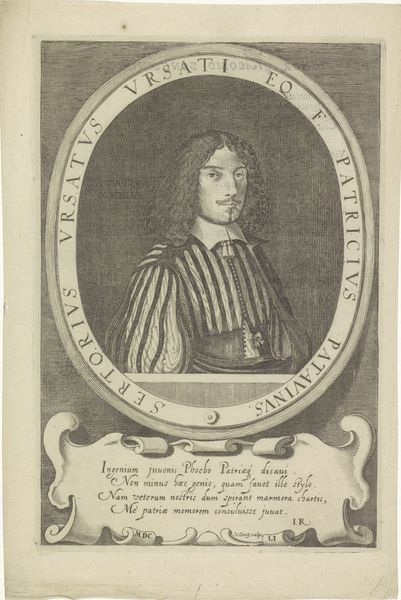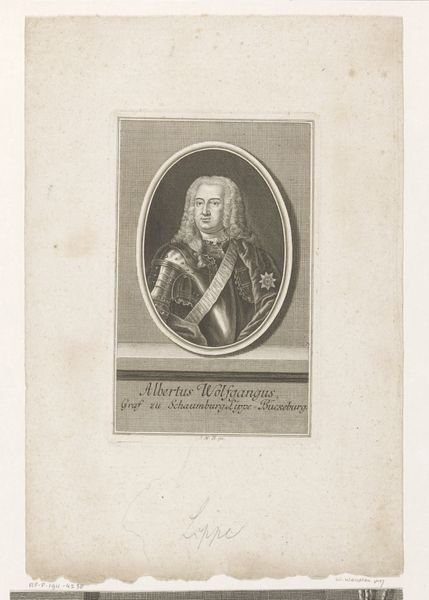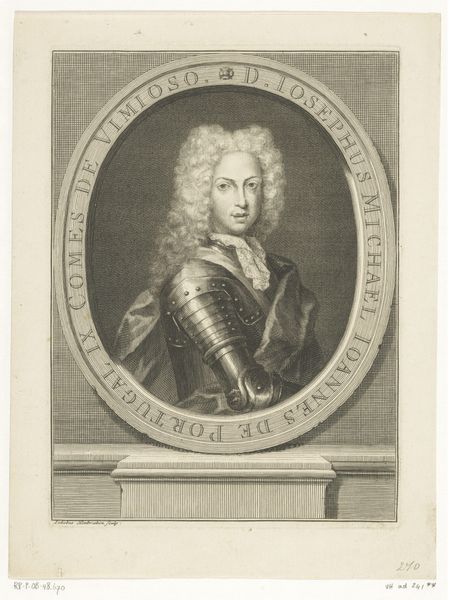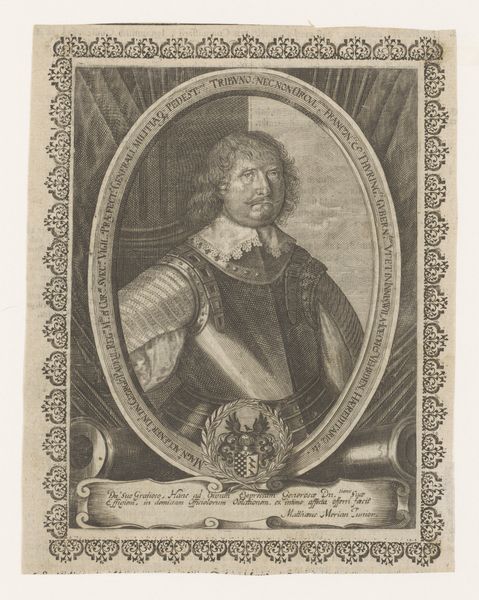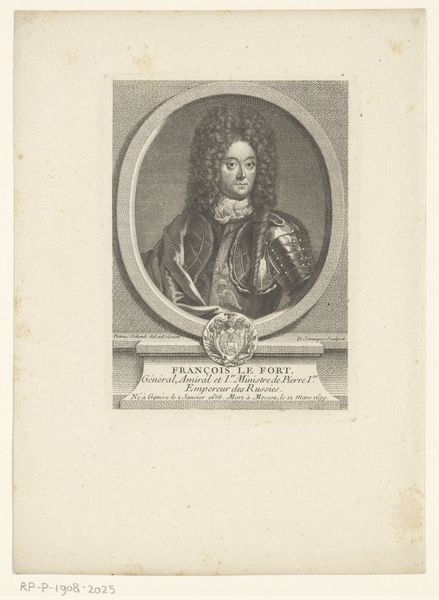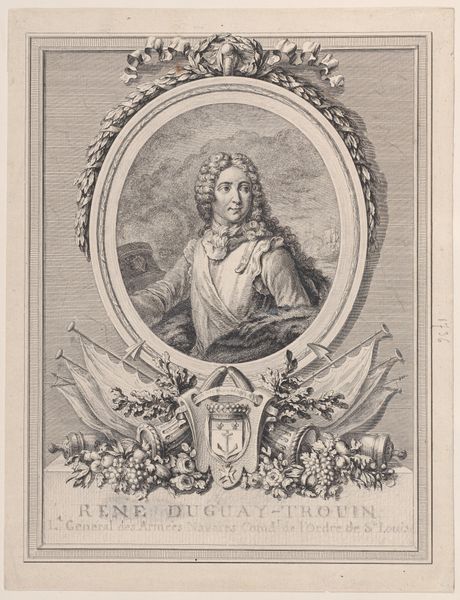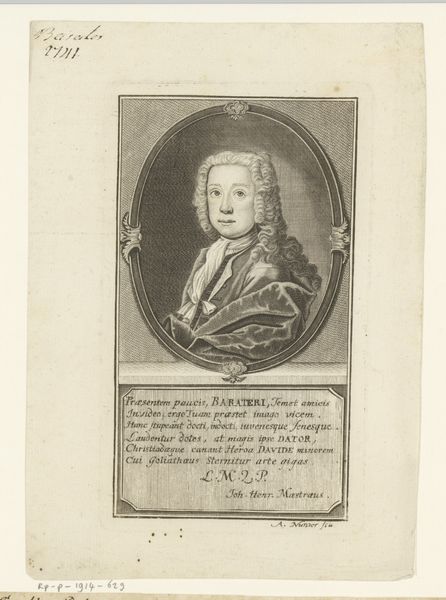
print, engraving
#
portrait
#
medieval
#
baroque
# print
#
old engraving style
#
history-painting
#
engraving
Dimensions: height 162 mm, width 118 mm
Copyright: Rijks Museum: Open Domain
Johann Caspar Dooms created this portrait of Ferdinand IV in the 17th century, using engraving techniques. Engraving is an intaglio process, meaning the image is incised into a surface, here a metal plate, and the recessed lines hold the ink. The artist would have used a tool called a burin to manually cut lines into the metal, requiring immense skill and precision. The density and direction of these lines create the illusion of shading and form, giving depth to Ferdinand's features and clothing. The resulting print is a testament to the engraver's craft, but also a symbol of power and status. The ability to reproduce and distribute images of rulers like Ferdinand IV played a crucial role in shaping public perception and solidifying their authority. The detailed rendering of his likeness, attire, and regal bearing speaks to the importance of image-making in early modern society. By attending to both the materials and making of this print, we can gain a deeper understanding of its cultural and historical significance, moving beyond traditional notions of fine art to consider the broader context of production and consumption.
Comments
No comments
Be the first to comment and join the conversation on the ultimate creative platform.

